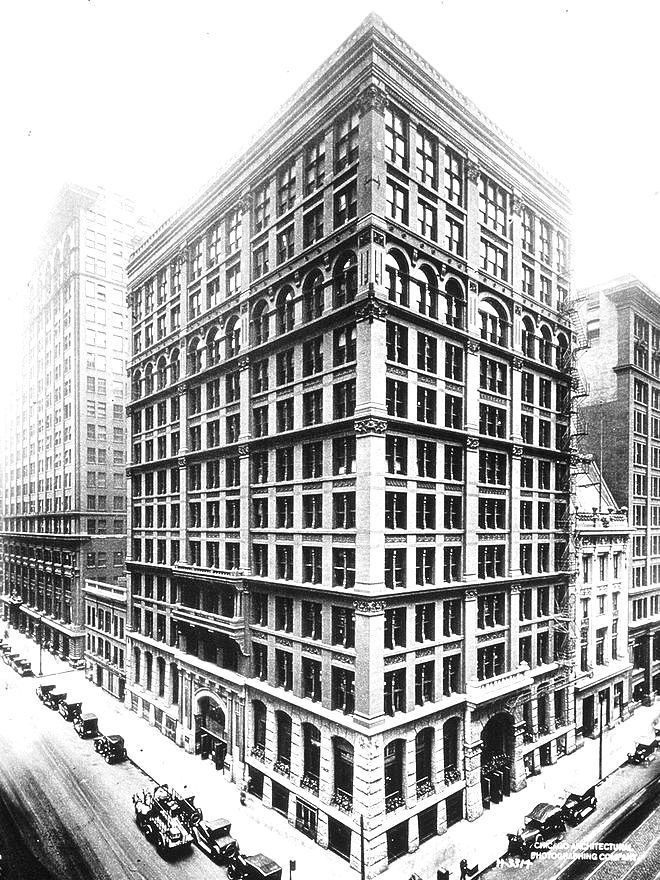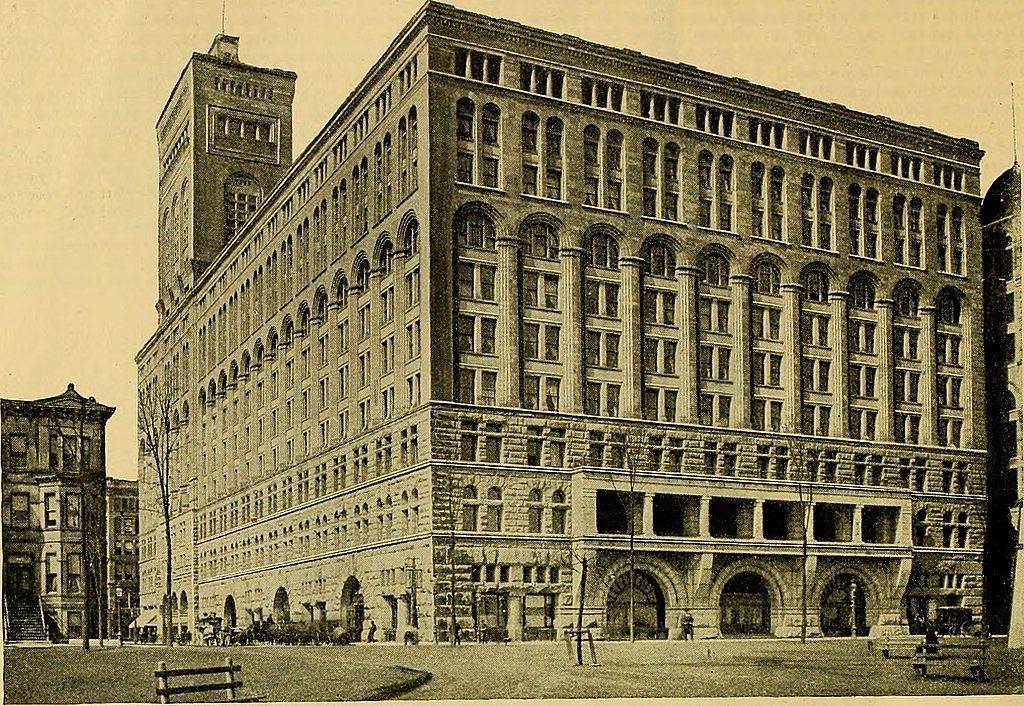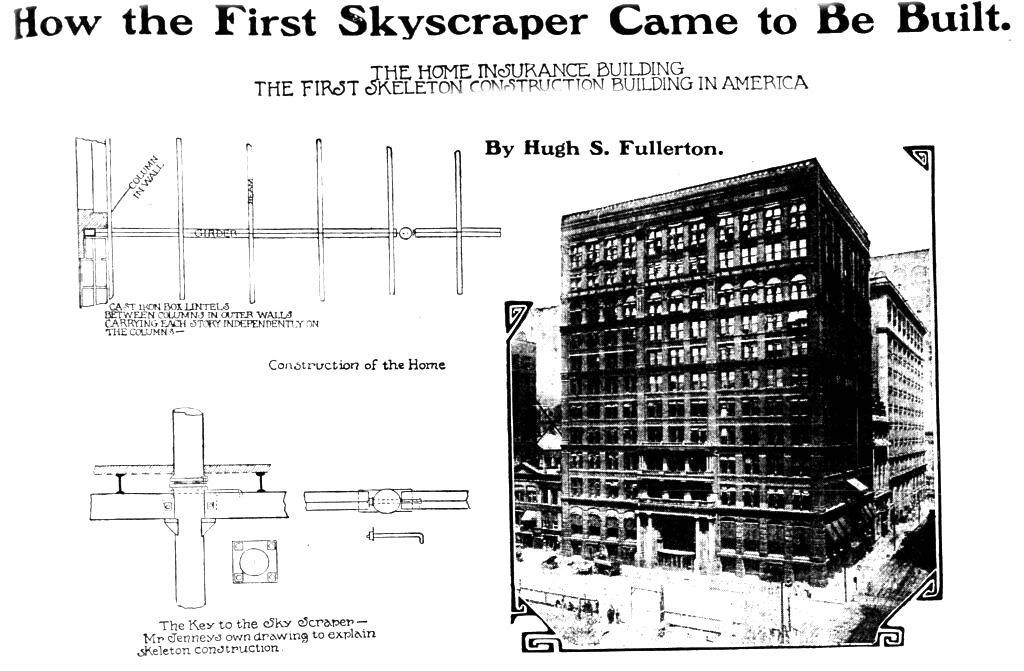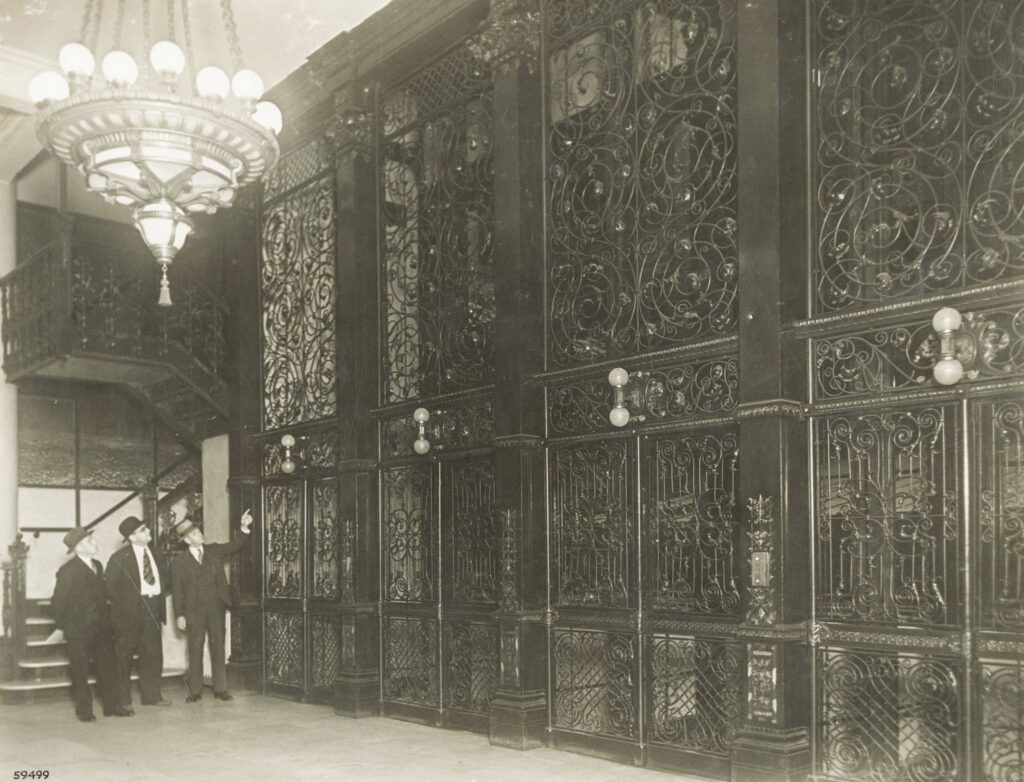World’s First Skyscraper, world record in Chicago, Illinois

Chicago, Illinois, United States--The Home Insurance Building in Chicago, Illinois, United States, was a 138-foot (42 m) tall, 10-story skyscraper designed by William Le Baron Jenney, who had been trained as an engineer in France and was a leading architect in Chicago; originally ten stories and 138 ft (42.1 m) tall, with two floors added later, bringing its finished height to 180 feet (54.9 meters), it sets the world record for being the World’s First Skyscraper, according to the WORLD RECORD ACADEMY.

"The most popular choice for the title of “world’s first skyscraper” is the Home Insurance Building that was built in Chicago in 1885. Not only was the building taller and more imposing than any that had appeared in cities before then, but it incorporated new technology that would evolve to become a core architectural concept to building tall structures, namely the use of an iron frame," the Architecture Competitions says.
"The Home Insurance Building in Chicago was designed by Major William LeBaron Jenney who was an engineer by training and attended École Centrale Paris with Gustave Eiffel. It’s not a great surprise then that the architectural revolution of the Home Insurance Building was the inclusion of an internal iron frame that is reminiscent of Eiffel’s self-titled tower in Paris.
"The introduction of an iron frame - that would later be replaced by steel - meant that the skyscraper would weigh approximately one-third as much as it would if it had been built entirely in stone. Therefore, the skyscraper could be designed taller without having to be thicker, darker, or stuffier."

"The Home Insurance Building in Chicago, opened in 1885, is, however, most often labeled the first skyscraper because of its innovative use of structural steel in a metal frame design
"The Home Insurance Building was a 138-foot (42 m) tall, 10-story skyscraper designed by William Le Baron Jenney, who had been trained as an engineer in France and was a leading architect in Chicago. Jenney's design was unusual in that it incorporated structural steel into the building's internal metal frame alongside the traditional wrought iron.
"This frame took the weight of the floors of the building and helped to support the weight of the external walls as well, proving an important step towards creating the genuine non-structural curtain walls that became a feature of later skyscrapers. The design was not perfect – some of the weight was still carried by masonry walls, and the metal frame was bolted, rather than riveted, together – but it was clearly a significant advance in tall building construction." (Wikipedia)

"The Home Insurance Building was a skyscraper that stood in Chicago from 1885 to its demolition in 1931. Originally ten stories and 138 ft (42.1 m) tall, it was designed by William Le Baron Jenney in 1884 and completed the next year. Two floors were added in 1891, bringing its now finished height to 180 feet (54.9 meters). It was the first tall building to be supported both inside and outside by a fireproof structural steel frame, though it also included reinforced concrete. It is considered the world's first skyscraper.
"The building was designed in 1884 by Jenney for the Home Insurance Company. Construction began on May 1, 1884. Because of the building's unique architecture and weight-bearing frame, it is considered the world's first skyscraper.[1] It had 10 stories and rose to a height of 138 ft (42.1 m); two additional floors were added in 1891, bringing the total to 12 floors, an unprecedented height at the time. The building weighed one-third as much as a masonry building and city officials were so concerned they halted construction while they investigated its safety.
"The Home Insurance Building in Chicago is often considered the world's first skyscraper due to both its design and height; the building was supported using an iron frame skeleton.[10] It was one of the earliest buildings to use an iron frame skeleton and the tallest to ever do so at the time, rising to ten stories; with an additional two stories added. It was the first multistory building in the United States to largely use iron in its exterior to support the masonry since Badger had constructed similar grain elevators between 1860 and 1862. The status of the Home Insurance Building as the first skyscraper had been accorded by the time of its centennial in 1985." (Wikipedia)
"In architectural history, one structure stands as the leader of a new era—the Home Insurance Building. Completed in 1885 on LaSalle Street between Adams and Monroe, it holds the distinction of being among the world's first skyscrapers. A marvel of engineering and a testament to human ingenuity, this iconic tower forever altered the city skyline," the Chicago Architecture Center says.
"The Home Insurance Building revolutionized high-rise construction with its pioneering use of cast iron technology. Jenney implemented an innovative system which relied on a cast iron frame “skeleton” to bear the weight of the building, rather than traditional load-bearing walls. This design feature allowed for dramatically increased height, structural stability, and design flexibility.
"With a height of 138 feet, the Home Insurance Building soared far above its contemporaries, epitomizing the term "skyscraper." Its metal frame allowed for an innovative curtain wall composed of non- structural stone sheathing, with large window panes to maximize natural light in the interior spaces."
"The Home Insurance Building, built in 1885 and located on the corner of Adams and LaSalle Streets in Chicago, Illinois, went down in history as the world’s first modern skyscraper," the History Channel says.
"Designed by engineer William LeBaron Jenney, the building was supported by a revolutionary steel frame, which allowed for much greater height and stability without the greater weight of traditional masonry construction.
"The Home Insurance Building stood until 1931, when it was demolished to make way for another skyscraper, the Field Building (now known as the LaSalle Bank Building)."
"It won’t surprise anybody to learn that the very first skyscraper went up in the United States, but it will surprise some to learn that it went up in Chicago. While it didn’t take Manhattan long to claim the steel-framed high-rise as its own, the skyscraper boom began in the capital of the American Midwest in 1885 with William Le Baron Jenney’s Home Insurance Building, which rose to its then-impressive height of 10 storeys (and, after an 1890 addition, 12) by means of metal, rather than just masonry," The Guardian reports.
"Legend has it that Jenney, an engineer by training and an École Centrale Paris classmate of Gustave Eiffel (designer of the eponymous tower), first suspected that an iron skeleton could hold up a building when he saw his wife place a heavy book atop a small birdcage, which easily supported its weight.
"This opened a new chapter in the history of towers, helped by the Great Chicago Fire (in which more than three square miles of the mostly wooden central city burned to the ground in 1871), and by Chicago’s surging 1880s economy."
"William LeBaron Jenney’s Home Insurance Building stood at the northeast corner of LaSalle and Adams streets. As the world’s first iron-and-steel-framed building, it heralded and made possible a new era in tall buildings," the WTTW says.
"It was arguably the world’s first skyscraper, though that distinction is debated among purists.
"Jenney’s structural engineering innovation meant that a building’s exterior masonry walls no longer had to be “load bearing,” alleviating the need for massive masonry foundations such as on the Monadnock Building or the Auditorium Building. The Home Insurance Building was demolished in 1931."
"It was in Chicago that the world’s first skyscraper rose up – and the city’s energy and dynamism has had a lasting impact on architecture throughout the 20th and 21st Centuries, writes Jonathan Glancey," the BBC says
"The world’s first skyscraper was the 10-storey Home Insurance Company on the north west corner of LaSalle and Adams Street, designed by William Le Baron Jenney and completed in 1884. Although its frame, or skeleton, was made partly of wrought and cast iron, it also featured Bessemer rolled steel beams.
"Dressed in grand Renaissance terracotta and stonework, this 138-ft-high building weighed only a third of an equivalent solid brick or stone buildings. At first this caused city officials some concern. Was such a tall and light building safe? At the time the majority of US architects and the expert press scoffed at the idea of a future generation of steel-framed buildings rising to more than 25 storeys."
Photos: World’s First Skyscraper, world record in Chicago, Illinois
(1) wikimedia/Chicago Architectural Photographing Company
(2,3,4) Chicago Beautiful


